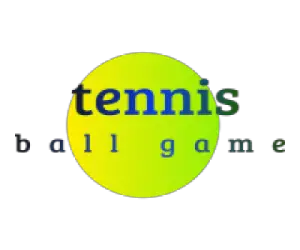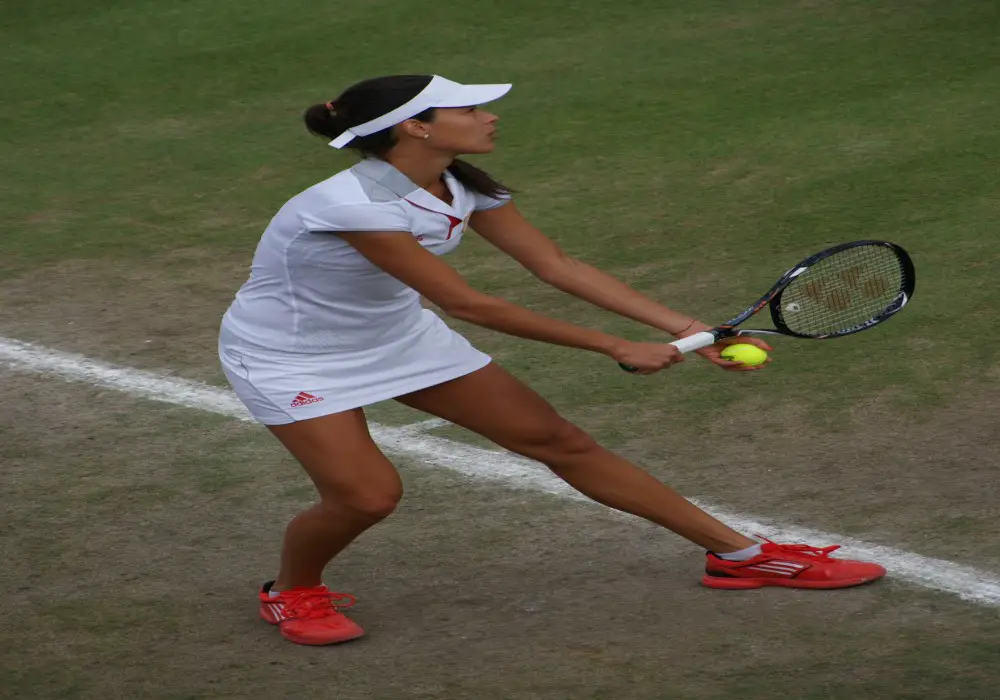The term fault is common but do you know the interesting meaning of fault in tennis game. Here it is.
What is a fault in tennis? A fault in tennis means either going against the tennis rules during hitting the ball or wrongfully hitting the tennis ball to an opponent’s court. The main types of tennis fault are foot fault, serve fault, and double fault. When a fault occurs, the ball does not reach the receiver and thus a game is not yet initiated and another second serve chance is given.
According to US Open tournament, violating tennis code for the first time fault, you are given a warning. Second fault attracts a penalty of a point. Third fault attracts being penalized for a game. This guide is a quick overview of tennis terms you should know.
Foot Fault In Tennis
What is a foot fault in tennis? A Foot fault in tennis is a fault that occurs when a tennis player fails to maintain the required position of movement when playing the tennis ball. Often, during a tennis match there are line judges whose work is specially to watch the feet movement of a tennis player.
Since the line judges are humans, sometime human error occurs and controversies on whether a foot fault has occurred or not is likely to happen. Just as missing a serve, a foot fault is penalized.
Actually, foot fault occurs when:
1.A player touches any area in front of the base-line with either foot. Also a foot touching a court is a fault. The foot of the player should always be behind the base-line more often within side-lines or center mark that are often imaginary.
2. Stepping on the imaginary extension is a foot fault on either side result in a foot fault
3. A server changes position of running or walking that have a significant change in the expected location initially taken by the player. Location should be maintained throughout the game.
Ways To Reduce Risks of Foot Fault In Tennis
Be Keen On Feet Movement When Practicing
During your training, have an extra racket in front of your feet. In that manner, when practicing a serve you can identify the feet that has high chances of creating a foot fault so you know how to reduce the risk.
Maintain Safe Standing Distance
Move a distance backwards from the base line. However, you need to be sure that the extra effort to be put is worth moving backward since the serve distance will increase. Be sure you can comfortably cover the distance.
Master Serving Skill
Keep practicing your tossing and serving until you master the skill and have the needed expertise
Make Use Of Video Flashbacks
During practice, have a video record either by a friend or set up a video to record all your moves. Once you re-watch your practice match you will know when and how to make adjustments on your feet movement to reduce foot faults.
Service Fault In Tennis
In order to serve like a tennis pro, you need to be aware of tennis serve rules entailing possible serve faults you should avoid. Serve fault occurs when a player is serving a tennis ball.
A tennis serve and volleying is often confusion. It can be helpful to also understand what is the tennis volley and how is it executed.
5 Types Of Tennis Serves
1. Underhand Serve:
An underhand serve occurs when a tennis ball is served slightly below the level of the shoulders. In most cases an underhand serve is highly practiced by children and can be viewed as unprofessional serve for an adult tennis match.
2. Flat Serve:
A flat serve occurs when a server hits a tennis ball with a racket that has been held in a manner that one holds an axe. The racket swings and swipes the ball in the air making the ball spin off.
A high speed flat serve can reach up to 150 miles per hour of tennis ball spinning. Often, flat serve has minimal chances of error as the tennis ball served often hits across the middle where the net tends to be low leveled. Often, using a flat serve reduces the risk of missing a serve.
3. Kick Serve:
Kick serve is commonly known as a topspin, reverse kick or American twist. To do a kick serve, a tennis ball is first tossed on the head of a tennis ball player to serve before laterally hitting the ball. Pro players can trigger an upward top spin of the ball towards the receiver.
4. Pat-a-cake serve:
Pat-a-cake serve occurs when a ball is tossed up then a tennis serve player hits the ball to get the game on without having to swing the racket behind his or her head.
Often, pat-a-cake serve can commonly be evident among newly trained players or perhaps players that somehow did not get correct instructions.
5. Slice Serve:
Slice serve is also known as a reverse serve. A slice serve occurs when a server hits a tennis ball using the dominant racket side. A slice serve performed by a right handed tennis ball player result in the ball moving leftward.
A slice serve is often done with pro players since it is the opposite side of a racket that is used to hit a ball that then moves the opposite direction.
What Happens When A Serve Fault In Tennis Occurs
Normally, you have two chances to serve a tennis ball. When the first serve is done faulty, you are given a warning but no points are deducted. You are then given a second chance to serve the tennis ball.
When you make another fault at this consecutive fault, you are not only warned but also penalized including losing points as your competitor earns points.
Besides, an ace serve is legal in tennis and should not be mistaken for a serve fault. If you do not know what is a ace in tennis, it is worth reading the article.
Service Fault Occurs When
1 A player has engaged in a foot fault
2. A tennis serve is missed when a player attempts to hit the tennis ball
3. After serving, the tennis ball comes in contact with a server partner, or touches any possessions such as clothes of the server.
4. A tennis ball served touches places other than the net prior to hitting the ground
5. A tennis ball served falls outside a service box, or fails to clear off the net post. Finding out what is a net ball in tennis or what is a let ball, can help you understand this fault as well as what is a let ball a netball.
6. Standing in the wrong position when delivering a serve and the position is discovered
7. A serve is not initiated with both feet at rest and behind the base-line before hitting the tennis ball
8. Serving a tennis ball from the wrong half of the court
9. A tennis ball serve is initiated when the receiver has not signaled to be ready to receive yet
Note
When a let serve occurs, it should not be considered to be a fault. For example, when a tennis ball is hit with a ratchet making the ball hit the net but lands in a service court is not considered as a fault.
However, if the tennis ball hits the net but later lands outside the service box then it is a let serve fault.
Double Fault In Tennis
What is a double fault in tennis? A double fault in tennis is a fault that occurs when a tennis ball is served at a fault twice, one fault after the other, often consecutively. The serving player automatically loses points after committing a double fault when serving the tennis ball. The receiver then wins extra points as a result of a server’s double fault.
Conclusion
In brief, what is a fault in tennis is when either the player’s movement during serving a ball, or the ball lands in an undesignated location when hit then a fault occurs. Main forms of fault in tennis include foot fault, serve fault, and double fault. Let serve fault can also occur depending on which side the ball lands on the court after touching the net.
Related Articles
Who Has Won All 4 Grand Slams In The Same Year?
Top Ten Male Tennis Players of All Time

